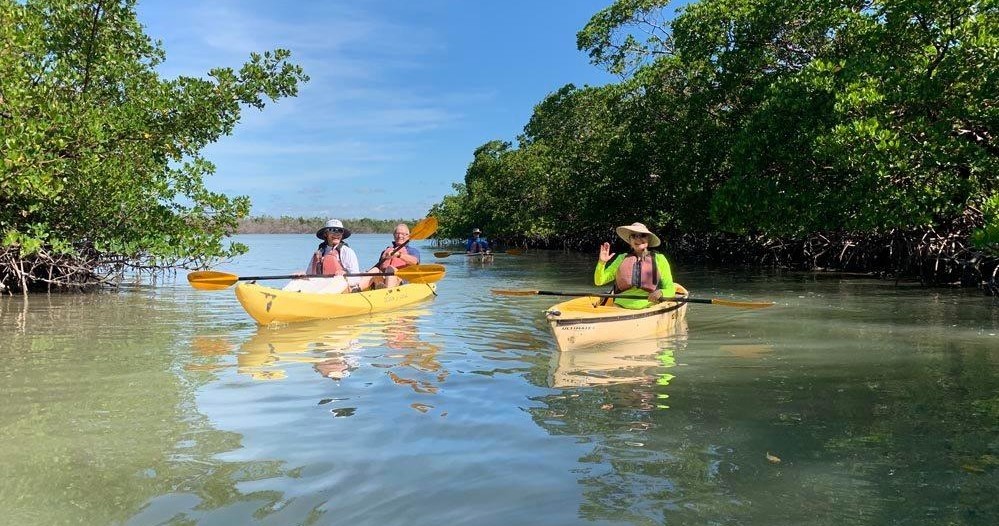The Everglades transform at sunrise and sunset into a captivating stage of light and wildlife. Learn the essential camera settings and practical tips to capture this dynamic, gulf-coast wilderness—and turn fleeting moments into lasting images.
Use a Sturdy Tripod
Because low light requires slower shutter speeds, a tripod stabilizes your camera for sharp images, especially during misty mornings or glimmering sunsets.
Arrive Early and Scout Vantage Points
Plan to reach boardwalks or observation towers at least 30 minutes before sunrise or sunset to set up and find your ideal composition.
Protect Gear from Moisture
The Everglades' humidity and occasional morning dew can affect equipment; use weather-sealed bags and microfiber cloths for lens cleaning.
Wear Waterproof Footwear
Trails near waterways or marshes can be wet or muddy, so non-slip waterproof boots will keep you comfortable and stable.
Mastering Photography Settings to Capture Everglades Sunrise and Sunset Magic

Private Orchids & Alligators Kayak Eco Tour
Starting at $149.95 • 3 Hours • All Ages
Join Aquaterra Excursions for a captivating 3-hour kayak journey through Florida’s dynamic Everglades. Discover orchids, paddle past alligators, and immerse yourself in a thriving wilderness. Perfect for eco-conscious adventurers seeking a close-up view of this unique ecosystem.
When dawn's first light breaks over the Everglades, or when the sun sinks low, painting the sky with fiery hues, the marshes and waters awake with a raw, fierce energy. To translate this magic through your lens, your settings must work alongside the Everglades’ shifting light and dynamic environment. Start with your camera in manual mode to control exposure precisely. Early morning and sunset light is soft but quickly changes—iso 100 to 400 works best to keep noise low without sacrificing clarity. Aperture around f/8 to f/11 strikes the right balance between sharpness and depth of field, ideal for capturing expansive landscapes where sharp details in both foreground sawgrass and distant islands matter.
Shutter speed demands attention. Early morning mist or rippling water can call for slower speeds (1/15 to 1/60 second), so a sturdy tripod is essential—especially when aiming to track the subtle movements of wading birds or reflective surfaces. For handheld shots, bump shutter speed to at least 1/125 second to avoid blur. Use a remote shutter release or timer function to minimize vibration.
White balance can make or break twilight shots. Set it to "cloudy" or "shade" for warmer tones that emphasize the sun’s golden light breaking through cypress trees or skimming the water’s surface. HDR mode may come in handy if the contrast between shadowed mangroves and blazing sky feels harsh, but take care not to over-process and lose natural texture.
Focus strategies differ at these times: manual focus allows pinpoint accuracy on subjects resisting autofocus in low light—think herons or dragonflies settling into reeds. Burst mode can capture fleeting moments when wildlife emerges under the dawn or dusk glow.
Lastly, track weather closely. Clear skies highlight vibrant colors, but scattered clouds can add drama by diffusing and bending light unpredictably. Arrive early to scout your vantage points—boardwalks like Anhinga Trail offer low and close wildlife encounters, while Shark Valley’s observation tower presents sweeping flooded prairies glowing in the golden hour.
Packing polarizing and ND filters will give you control over reflections and light intensity—vital for crafting crisp, vivid shots under the Everglades’ unique light conditions. Hydration and sturdy, waterproof footwear are must-haves; terrain can shift from dry trails to soggy marsh edges as morning dew evaporates or tidal waters change.
Photography here is an exchange with an environment fiercely itself, not a backdrop to simply capture. Approach with patience and respect, and your images will hold the Everglades' dawn and dusk not just in pixels, but in feeling.
Nearby Trips
All Adventures
Boat Charters
Water Activities
Adventures near Homestead
Discover the unique and memorable adventures that make Homestead special.
Frequently Asked Questions
What camera settings work best for capturing wildlife at dawn?
Use a fast shutter speed (1/250 sec or faster) to freeze animal movement, an aperture of f/5.6 to f/8 for sufficient depth, and ISO between 400-800 depending on light. Manual focus or back-button autofocus helps lock on moving subjects in low light.
Are drones allowed for photography in the Everglades?
No, drones are prohibited within Everglades National Park to protect wildlife and visitor privacy. Stick to handheld or tripod-mounted cameras for ethical and legal capture.
Which trails offer the best vantage points for sunset shots?
Shark Valley Observation Tower offers panoramic views perfect for sunset skies stretching over marshlands. Anhinga Trail's boardwalk edges frame sunsets reflecting on water channels beautifully.
How do I protect my gear from the Everglades’ humid conditions?
Always carry weather-sealed camera bags, silica gel packets, and microfiber cloths for lens cleaning. Avoid sudden temperature changes that cause lens fogging and routinely check equipment for moisture.
Is it safe to hike during early morning or sunset hours?
Yes, but stay aware of wildlife like alligators and snakes that are more active during these times. Stick to designated trails and avoid tall grass or water edges after dark for safety.
Can I combine photography with other activities in the Everglades?
Absolutely. Kayaking, bird watching, and guided boat tours often provide unique perspectives for photography while engaging with the ecosystem responsibly.
Recommended Gear
Tripod
Provides camera stability for slow shutter speeds, crucial during low-light conditions of sunrise and sunset.
Polarizing Filter
Reduces glare off water and intensifies colors, enhancing Everglades reflections and skies.
Waterproof Hiking Boots
Keeps feet dry when traversing wet or muddy trails common near marshes and sloughs.
Mosquito Repellent
Protects you from biting insects prevalent during warm, humid months in the wetlands.
Local Insights
Hidden Gems
- "Western prairies near Shark Valley for intimate waterbird portraits"
- "Otter Slough boardwalk for reflections and sunrise colors"
Wildlife
- "Roseate Spoonbill"
- "American Alligator"
- "Great Blue Heron"
- "Anhinga"
History
"The Everglades were once home to indigenous tribes like the Tequesta, and later, early 20th-century efforts to drain the wetlands shaped the park's preservation as a national treasure."
